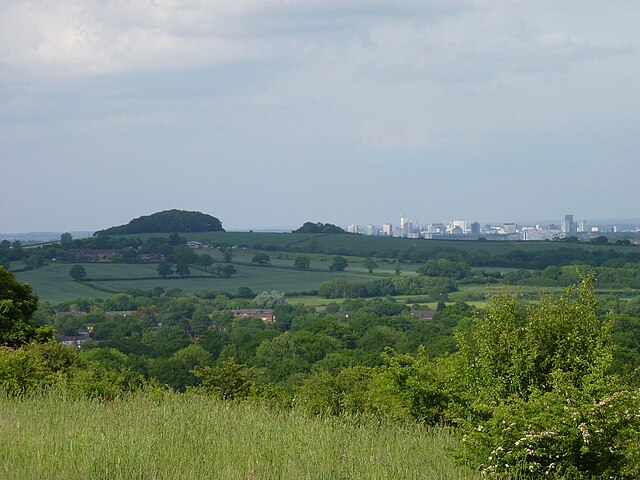Birmingham, the vibrant heart of the West Midlands in the UK, is known for its rich history, bustling culture, and, yes, its famously unpredictable weather. Whether you’re a local planning your week or a visitor packing for a trip, understanding Birmingham’s climate is key to making the most of your time in this dynamic city. So, what’s the deal with Birmingham’s weather? Is it always rainy, or does the sun ever shine? Let’s dive into the details of Birmingham’s weather patterns, seasonal quirks, and practical tips to help you navigate the city like a pro.
Why Birmingham’s Weather Matters
Picture this: you’re strolling through Birmingham’s Jewellery Quarter, admiring the historic architecture, when suddenly, the skies open up, and you’re caught in a downpour without an umbrella. Sound familiar? Birmingham’s weather can be a bit like a moody artist—full of surprises and quick changes. Knowing what to expect can save you from soggy shoes or missed opportunities to enjoy outdoor attractions like Cannon Hill Park or the Botanical Gardens. Plus, with the city hosting events year-round, from music festivals to Christmas markets, the weather plays a starring role in your plans.
A Quick Overview of Birmingham’s Climate
Birmingham sits in a temperate maritime climate zone, which is a fancy way of saying it gets mild, wet winters and cool, occasionally warm summers. Unlike tropical paradises or arctic tundras, Birmingham’s weather is rarely extreme, but it’s known for its variability. One minute you’re basking in sunshine, the next you’re dodging raindrops. This unpredictability is part of the city’s charm, but it also means you need to be prepared for anything.
Birmingham’s Weather by Season

To really get a grip on Birmingham’s climate, let’s break it down by season. Each time of year brings its own flavor, from crisp autumn leaves to summer festivals. Here’s what you can expect.
Spring: A Fresh and Fickle Start
Spring in Birmingham, from March to May, is like opening a mystery box. Temperatures typically range from 7°C to 15°C (45°F to 59°F), but don’t be fooled by the blooming flowers at Lickey Hills—chilly days and sudden showers are common. April is notorious for its “showers bring flowers” vibe, with rainfall averaging about 60mm. Pack layers and a waterproof jacket if you’re visiting during spring, and keep an eye out for sunny days perfect for exploring the city’s canals.
Summer: Warm Days and Festival Feels
June to August is Birmingham’s summer, and it’s when the city truly comes alive. Temperatures hover between 15°C and 22°C (59°F to 72°F), with occasional heatwaves pushing the mercury to 25°C or higher. Rainfall is still a player, with around 50-70mm per month, but you’ll get plenty of sunny intervals to enjoy outdoor events like the Birmingham International Jazz Festival. Pro tip: always carry sunglasses and an umbrella—Birmingham’s summer is a balancing act!
Autumn: Crisp Air and Colorful Leaves
From September to November, Birmingham transforms into a canvas of red, orange, and gold. Autumn temperatures range from 10°C to 18°C (50°F to 64°F), cooling down as the season progresses. Rainfall picks up, averaging 70-80mm per month, and windy days can make it feel chillier. This is a great time to visit indoor attractions like the Birmingham Museum and Art Gallery, but don’t miss a walk through Edgbaston Reservoir to soak in the fall colors.
Winter: Chilly but Festive
Winter, from December to February, is Birmingham’s coldest season, with temperatures between 2°C and 8°C (36°F to 46°F). Snow is rare, but frost and drizzle are frequent, with rainfall around 60-70mm per month. The city’s Christmas Market in Victoria Square adds a cozy vibe, but you’ll want a warm coat and scarf. Winter days are short, so plan outdoor activities like ice skating at Centenary Square for early in the day.
What Makes Birmingham’s Weather So Unpredictable?

Ever wonder why Birmingham’s weather feels like it’s playing a game of roulette? The answer lies in its geography and the UK’s position in the Atlantic weather systems. Birmingham is landlocked in the Midlands, which means it misses out on the moderating effects of the sea. Instead, it gets hit by weather fronts rolling in from the Atlantic, bringing rain, wind, and rapid changes. The city’s urban environment also creates a “heat island” effect, where buildings and roads make it slightly warmer than surrounding rural areas.
The Role of Jet Streams
Jet streams, those high-speed air currents in the atmosphere, are like invisible puppeteers controlling Birmingham’s weather. When they dip south, they drag wet and stormy weather into the UK. When they shift north, you might get a rare stretch of clear skies. These shifts are why you can wake up to fog, see sunshine by lunch, and face rain by dinner.
Temperature Trends in Birmingham Over the Years
Birmingham’s weather isn’t just about today—it’s part of a bigger climate story. Over the past few decades, average temperatures have crept up slightly, with summers getting warmer and winters less frosty. Data from the Met Office shows Birmingham’s annual average temperature has risen by about 0.8°C since the 1980s. Heatwaves, once a once-in-a-blue-moon event, are now more common, with 2022 seeing temperatures hit a scorching 38°C. On the flip side, heavy rainfall events are also increasing, posing challenges for urban drainage systems.
Climate Change and Birmingham’s Future
What does climate change mean for Birmingham? Scientists predict wetter winters, drier summers, and more extreme weather events in the coming decades. This could mean more flash flooding in areas like Digbeth or longer heatwaves affecting outdoor markets. The city is already taking action, with initiatives like sustainable urban planning and green spaces to cool the urban heat island. As a visitor or resident, you can help by supporting eco-friendly businesses and staying informed.
Weather Warnings: Staying Safe in Birmingham

Birmingham’s weather isn’t usually dangerous, but it can throw some curveballs. The Met Office issues color-coded warnings (yellow, amber, red) for severe weather like heavy rain, thunderstorms, or high winds. Yellow warnings are common, signaling potential travel delays or minor disruptions. Amber warnings, like those issued for thunderstorms in 2024, mean you should be prepared to adjust plans. Red warnings are rare but serious—think widespread flooding or life-threatening conditions. Check the Met Office website or app for updates, especially during stormy seasons.
Tips for Handling Severe Weather
Caught in a storm? Don’t panic. If you’re driving, avoid flooded roads—six inches of water can sweep a car away. For pedestrians, stick to main paths and avoid shortcuts through parks during heavy rain. If thunderstorms are forecast, skip outdoor events and head to indoor spots like the Library of Birmingham. And always keep a charged power bank—power outages can happen during severe weather.
How to Dress for Birmingham’s Weather
Dressing for Birmingham is like packing for a trip where the itinerary’s a mystery. Layers are your best friend. In summer, a light jacket or cardigan paired with breathable clothes handles both sun and showers. In winter, a waterproof coat, scarf, and sturdy boots keep you cozy. Umbrellas are handy but can flip in gusty winds, so consider a hood or rain hat. Locals swear by the “onion approach”—peel off layers as the day warms up, then pile them back on when it cools down.
Best Activities for Birmingham’s Weather
Birmingham’s weather might keep you guessing, but it doesn’t have to ruin your fun. Here’s how to make the most of any forecast.
Sunny Days: Outdoor Bliss
When the sun’s out, Birmingham sparkles. Head to Sutton Park for a picnic, cruise the canals on a narrowboat, or catch live music at an open-air festival. The city’s green spaces, like Warley Woods, are perfect for soaking up vitamin D. Just slather on sunscreen—UV levels can be high even on cloudy days.
Rainy Days: Indoor Adventures
Rainy days are your excuse to dive into Birmingham’s cultural scene. Explore the Thinktank Science Museum, sip craft beer at The Custard Factory, or catch a show at the Birmingham Hippodrome. Shopping fans can hit the Bullring, where you’ll stay dry while browsing top brands. Pro tip: book indoor activities in advance during wet seasons to beat the rush.
Weather and Events in Birmingham
Birmingham’s event calendar doesn’t bow to the weather, but it’s smart to plan around forecasts. Summer festivals like the Birmingham Weekender are a blast but can get muddy—pack wellies. The Frankfurt Christmas Market in winter is a must, but dress warmly for those chilly evenings. Check event websites for weather-related updates, and always have a backup plan, like ducking into a cozy pub if the skies open up.
Ready to tackle Birmingham’s climate like a local? Here are some insider tips:
- Check the forecast daily: Use apps like BBC Weather or Met Office for hour-by-hour updates.
- Embrace layers: A T-shirt, sweater, and waterproof jacket cover most scenarios.
- Plan indoor backups: Have a list of museums or cafes to visit if rain strikes.
- Stay flexible: Birmingham’s weather changes fast, so don’t lock in rigid plans.
- Invest in good shoes: Waterproof boots or trainers save your feet on wet days.
Conclusion: Embrace Birmingham’s Weather
Birmingham’s weather might keep you on your toes, but that’s part of its charm. From sunny summer festivals to cozy winter markets, the city’s climate adds character to every experience. By understanding seasonal patterns, dressing smart, and staying flexible, you can enjoy Birmingham rain or shine. So, grab your umbrella, pack a sunny attitude, and dive into all this vibrant city has to offer. What’s the weather like today? Check the forecast and get ready for an adventure!
Frequently Asked Questions
1. Does it rain a lot in Birmingham?
Birmingham gets its fair share of rain, with 60-80mm per month on average. Spring and autumn are the wettest seasons, but showers can pop up year-round. Always carry a small umbrella or waterproof jacket.
2. What’s the best time to visit Birmingham?
Summer (June to August) offers the warmest weather and tons of outdoor events, but spring and autumn are great for milder temperatures and fewer crowds. Winter’s festive vibe is perfect for Christmas market fans.
3. How cold does Birmingham get in winter?
Winter temperatures typically range from 2°C to 8°C (36°F to 46°F). Snow is rare, but frost and drizzle are common, so bundle up with a warm coat and scarf.
4. Are heatwaves common in Birmingham?
Heatwaves are becoming more frequent due to climate change, with temperatures occasionally hitting 25°C or higher in summer. The record high was 38°C in 2022, so stay hydrated on hot days.
5. Where can I check Birmingham’s weather forecast?
Reliable sources include the Met Office, BBC Weather, and AccuWeather. Apps provide hour-by-hour updates, which are handy given Birmingham’s unpredictable weather.

